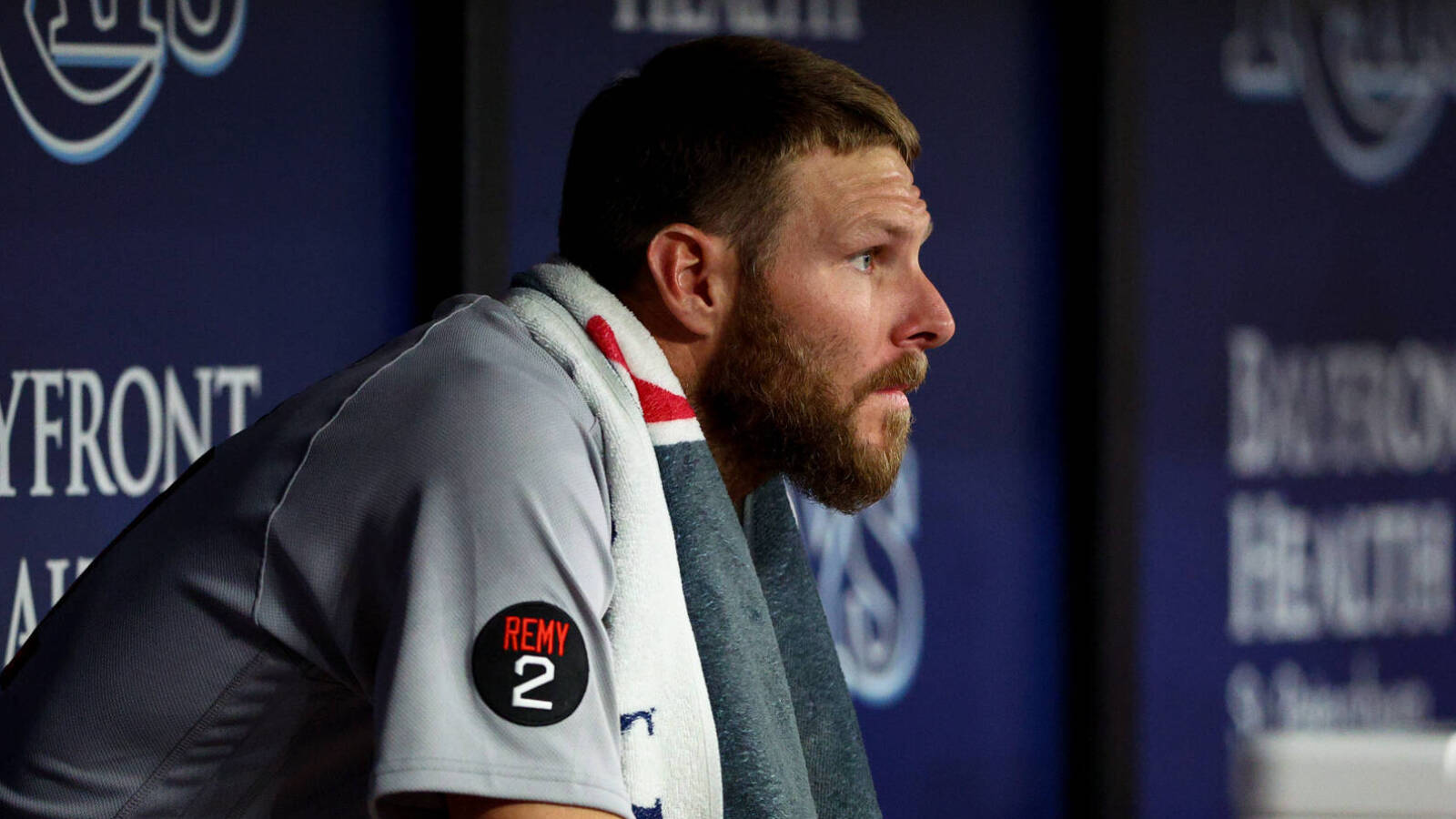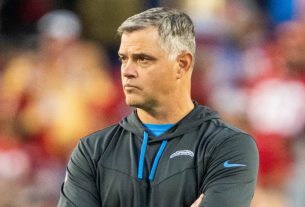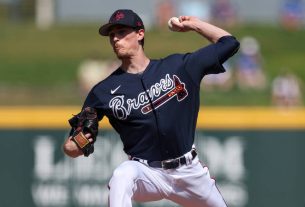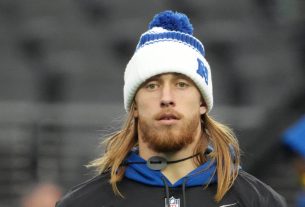The Red Sox have been one of the more capricious teams in recent history. This millennium has seen them win the World Series four times but also finish fifth in the American League East five times. The past five seasons have seen them go from winning it all in 2018 to missing the playoffs in 2019, falling to last in 2020, back to the playoffs in 2021 but then back to the basement last year.
That mercurial nature seems to be embodied in this year’s rotation. There’s plenty of talent but also plenty of risk. It wouldn’t be a total shock to see this group be completely dominant or an utter disaster. Let’s take a look at the candidates and their respective error bars.
From 2012 to 2018, Sale was one of the best pitchers in the league. He tossed 1,388 innings over that stretch with a 2.91 ERA, 30.2% strikeout rate, 5.4% walk rate and 42.7% ground ball rate. His 39.2 fWAR in that period was bested only by Clayton Kershaw and Max Scherzer.
Unfortunately, that’s starting to feel like ancient history now. Sale struggled in 2019 with a 4.40 ERA over 25 starts. That was the “juiced ball” season and his 19.5% HR/FB rate was a career high, so perhaps it wasn’t as bad as it seemed, but ERA estimators still pointed to him taking a step back from his previous work. The three subsequent seasons have been mostly lost to injuries, with Sale undergoing Tommy John surgery in March of 2020. He returned in 2021 and made nine starts that year, but then the injury bug came back the next season. A right rib stress fracture put him on the injured list to start the year, and then he was hit by a comebacker when he returned and suffered a left fifth finger fracture. While on the IL with that finger injury, he fractured his right wrist in a bicycle accident.
Some of those injuries are of the fluky variety and don’t necessarily point to any irreversible core issue. However, Sale will turn 34 years old in March and has pitched less than 50 major league innings in the past three years, including just 5 2/3 last year. It’s difficult to know what to expect from him after so little recent work, and even if he’s in good form, will he eventually hit some kind of wall? Either mandated by the club or just a physical limit?
Paxton is in a fairly similar situation to Sale, though his previous highs aren’t quite as high. From 2016 to 2019, he posted a 3.60 ERA over 568 innings. He struck out 28.5% of batters he faced while walking just 6.7% and got grounders at a 42.6% clip. His 15.1 fWAR in that period was 12th among all pitchers in the league. But various arm injuries have limited him to just six starts since then, with his last in April of 2021. He required Tommy John at that time and was on his way back last year but suffered a lat tear during his rehab.
The Sox could have locked him in for another two seasons by triggering a $26M option but made the obvious choice to turn that down. Paxton then turned down a chance to return to free agency by triggering his $4M player option for this year. Like Sale, he’s coming off three mostly seasons and will be 34 this year, but he’ll be about almost two years removed from his last major league appearance once the season begins. Will he be able to get things back on track and, if so, for how long?
Kluber’s arc has some echoes of the two guys already mentioned in this piece, though with more optimistic developments recently. From 2014 to 2018, he made 160 starts with a 2.85 ERA, 28.5% strikeout rate, 5.2% walk rate and 44.8% ground ball rate. His 30.3 fWAR just nudged out Sale and trailed only Scherzer and Kershaw.
But after that, a forearm fracture and teres muscle tear limited him to just eight starts over 2019 and 2020. He got back on track somewhat in 2021, as a shoulder strain sent him to the IL for about three months, but he still made 16 starts with a 3.83 ERA. He stayed healthy enough to take the ball 31 times last year, posting a 4.34 ERA. That came with excellent control as he walked just 3% of batters, but his strikeouts were down to a 20.2% clip.
Those past couple of seasons are encouraging but Kluber turns 37 in April. His fastball averaged 88.9 mph last year, well down from his 94-95 mph peak form. He seems like he has the ability to succeed despite that diminished stuff, but that will likely become more challenging over time, even if he does stay healthy.
Compared to three previous pitchers on this list, Pivetta is the picture of reliability. He hasn’t been to the injured list for a non-COVID reason during his time in the majors, which began in 2017.
However, that might be his best asset, as he hasn’t exactly wowed with the results. He has a 5.02 ERA for his career and registered a 4.56 mark last year. His 22.6% strikeout rate was slightly better than the average starter last year, but his 9.4% walk rate and 38.5% ground ball rate were both a few points worse. He’s not terribly exciting but there’s certainly value to that kind of steadiness, especially amid this erratic group.
Whitlock had a great season in 2021 after being plucked from the Yankees in the Rule 5 draft. He tossed 73 1/3 innings over 46 relief appearances with a 1.96 ERA, 27.2% strikeout rate, 5.7% walk rate and 49.7% ground ball rate. He began 2022 back in the bullpen but the Sox tried stretching him out midseason. He made nine starts before a hip issue sent him to the injured list in June. He returned in July but was kept in a relief role until the hip issue put him on the IL again in September. He underwent surgery for that hip at that time but is expected to be ready for spring.
The club plans on implementing him as a starter here in 2023, which will be an interesting experiment. The 120 2/3 innings he threw in the minors in 2018 are the most in a single season on his résumé, as he’s been in the 70-80 range since then. With just those nine big league starts to his name, can he suddenly jump to a full starter’s workload? And even if he can, will he be able to maintain the same quality of of work that he did in relief in 2021?
Houck is in a fairly similar boat to Whitlock, as there are intriguing results there but it’s tough to map out the best path forward. He has a 3.02 ERA in 146 innings for his career thus far, striking out 27.6% of batters faced, walking 8.7% and getting grounders at a 49.3% rate. That work has involved 20 starts and 33 relief appearances. The splits aren’t huge, as he has a 3.22 ERA as a starter and a 2.68 out of the ’pen. He dealt with lingering back issues last year that sent him to the injured list in August and he ultimately underwent surgery in September.
The club has indicated they may stretch Houck out as a starter in camp but move him to the bullpen if the five guys ahead of him are all healthy. That still leaves a decent chance of him spending some time in the rotation this year. He made just four starts last year and hasn’t reached 120 innings in any of his professional seasons.
Brayan Bello/Kutter Crawford/Josh Winckowski
These three all have made their major league debuts but likely need more time to develop. Bello registered a 4.71 ERA last year, with Crawford at 5.47 and Winckowski at 5.89. They all have options and will likely be in the minors to start the year. But given the unstable nature of the arms ahead of them on the depth chart, there’s a chance they will be needed at some point.
Brandon Walter/Bryan Mata/Chris Murphy
These three are all on the 40-man but have yet to reach the majors. Walter and Murphy just got added in November to protect them from the Rule 5 draft. Walter has just nine Double-A starts and two at Triple-A, meaning he likely won’t be lined up for his debut in the immediate future. Murphy made 15 Triple-A starts last year but put up a 5.50 ERA in that time. Mata underwent Tommy John in April of 2021 and was able to return last year and toss 83 innings in the minors, but he has just five Triple-A starts to his name thus far. This group could be called upon if things really go south, but they will likely be behind the Bello/Crawford/Winckowski trio unless things shift as the season progresses.
_____
As mentioned off the top, there’s plenty of talent here but there are so many ways this could play out. Five years ago, Sale, Paxton and Kluber would have been a dominant front three but the odds of them all suddenly clicking into their previous ace levels are low. Whitlock and Houck have had tantalizing results but each is coming off a season ended by surgery and both are generally unproven as starters over any kind of meaningful stretch. The younger depth options could always take a step forward and seize a job but they probably can’t be counted on yet.
It seems the error bars are quite wide for the Sox going into 2023. Center field and shortstop will be manned by players with minimal experience at those positions in Adam Duvall and Enrique Hernández, respectively. Their first baseman will be Triston Casas, who has 27 MLB games to his name. Their left fielder will be Masataka Yoshida, attempting to make the transition from NPB to MLB. They’re hoping to get some kind of contribution from Adalberto Mondesi, who’s been limited to just 50 games over the past two years combined. There’s uncertainty all over the place, including the rotation. In a style that fits the organization, they could have a miracle season or it could all go horribly wrong.



